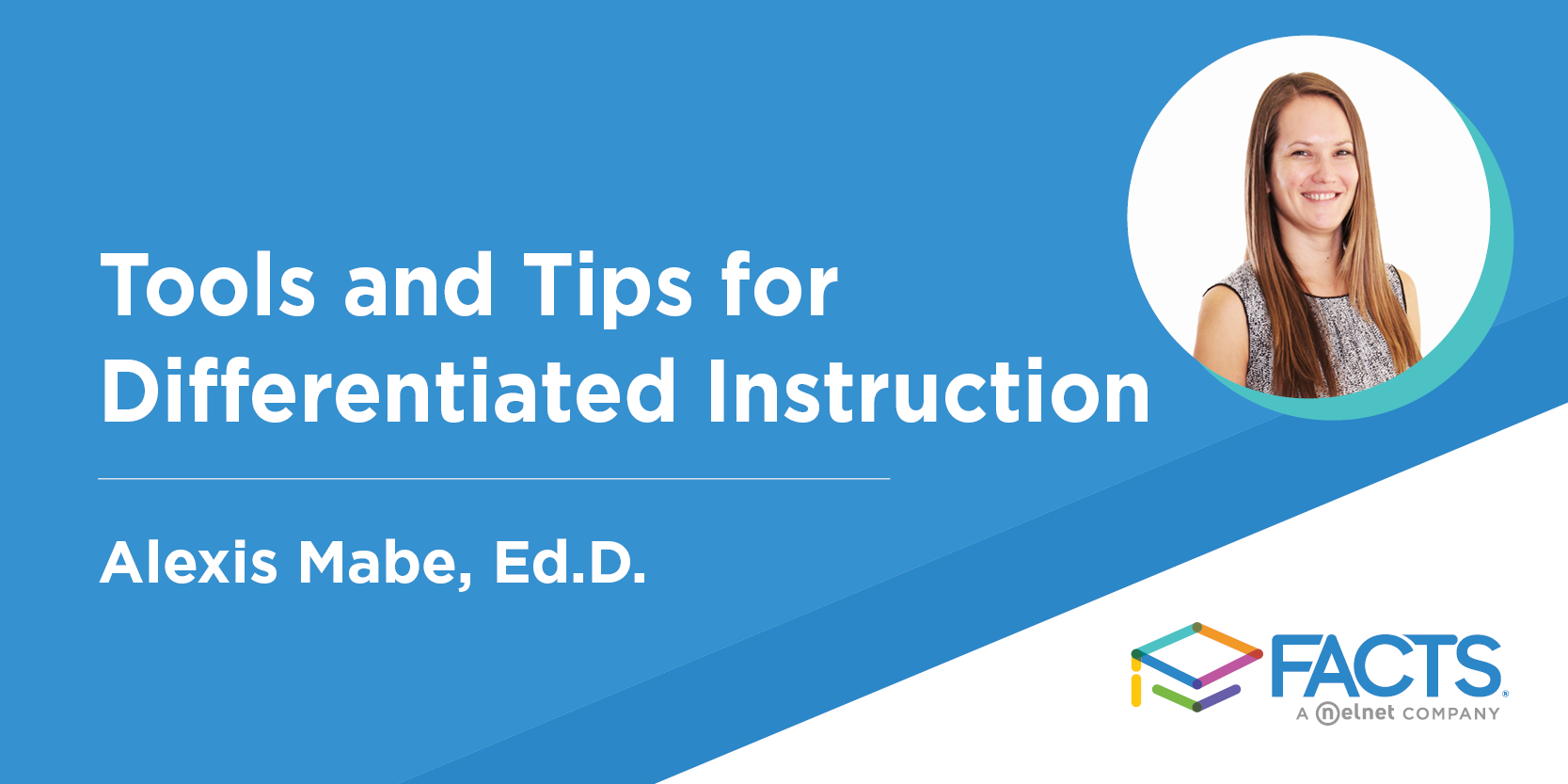Differentiated instruction is not new. In fact, it’s been around for a long time. Back in the days of one-room schoolhouses, teachers had to differentiate and personalize, because they literally had every grade in their class.
Somewhere along the line, we got the idea that kids of similar ages would have similar skills and abilities. However, standardized testing proved us wrong and showed major gaps in knowledge.
Differentiated instruction is research-driven and has been proven to help both high-achieving and underachieving students. It can lead to more student engagement and accountability, which in turn also help with classroom management.
Four ways to differentiate a lesson
-
Content
As one example, you can differentiate by using different levels of Bloom’s Taxonomy. Students who are just being introduced to a topic can do something lower on the pyramid and students who demonstrate more background knowledge can do something higher, such as creating or evaluating.
-
Process
Students can also be given a choice in how they receive the information. For example, sometimes I give my students the option of reading an article or watching a short video.
-
Product
Students may have a preference for how they demonstrate knowledge. Some students may enjoy making a video, others a written report, or a podcast, etc.
-
Learning space
This one can be the hardest for educators to control – especially with schools being closed. Often, we are provided with the furniture in our learning space. Unless we are lucky enough to teach in a place that allows students flexibility and choice in where they learn.
Objections to differentiation
Some claim that not enough research exists about differentiation to make the benefits worth the added time teachers have to spend prepping and planning lessons. It may have been true in the past, but technology has made differentiating so much easier! Now, I argue there are no drawbacks to differentiating and it should be standard practice for all educators. Worry not! Even if you don’t have access to a ton of tech, there are resources and strategies discussed below for you.
Some of my favorite strategies to differentiate
- Hyperdocs: a term coined from hyperlinked documents by The Hyperdoc Girls. However, hyperdocs are so much more than hyperlinked documents. Find out more here.
- Flipped classroom: this started in math classes. Traditionally, the math teacher gives the lesson and the students do the practice problems at home. A flipped classroom changes that, so that the students get the lesson at home – generally via a prerecorded video – and then get to do the practice problems with the teacher there to help and answer questions. This allows the students to work through the lesson at their own pace and gives the teacher the opportunity to pull small groups to help students who didn’t make the necessary connections. My favorite version of the flipped classroom is the In-Class Flip. Watch this video by Rebecca Gonzalez for more on that.
- Project-based learning: PBL gives students voice and choice in how they learn, what they learn, and often how they present. Students work for an extended period of time to answer a driving question. For more information and a ton of resources, check out the PBLWorks website.
- Choice boards: as they are aptly named, give the students choice and often allow students to move through them at their own pace. To check out more about each of the different types of choice boards low, click here.
- Learning menus
- Think-tac-toe
- Agendas
- Playlists
Additional tools
- Plickers: an awesome way to collect data without the students having technology. Teachers can see what percentage of the class is comprehending the topic and all you need are printouts and a phone!
- Thrively: allows students to take a strengths assessment. This information can be used to group students based on strengths. You can make sure that every group has someone who is creative, who has good leadership skills, etc.
- Interact: a tool to help you make Buzzfeed style quizzes. Like when Facebook asks you if you want to know what Stranger Things character you are – only for education! I use this the most to make reviews for large summative assignments. You can read more about this here.
Data tells all
Lastly, when it comes to differentiated instruction data can be your best friend. You can get that in a variety of ways: thumbs up/thumbs down, exit tickets, plickers, formative assessments (using paper or Socrative or Google Forms, etc.). This data allows us to make decisions about which students need remediation and which ones are ready for enrichment. It’s amazing to see how the students respond when they feel information has been curated for them and they have voice and choice in their learning.
My motto: One size fits none.
Happy differentiating!

